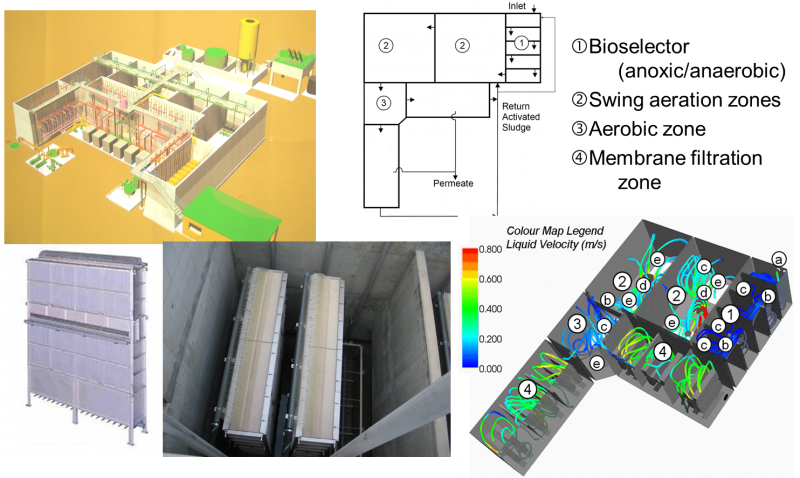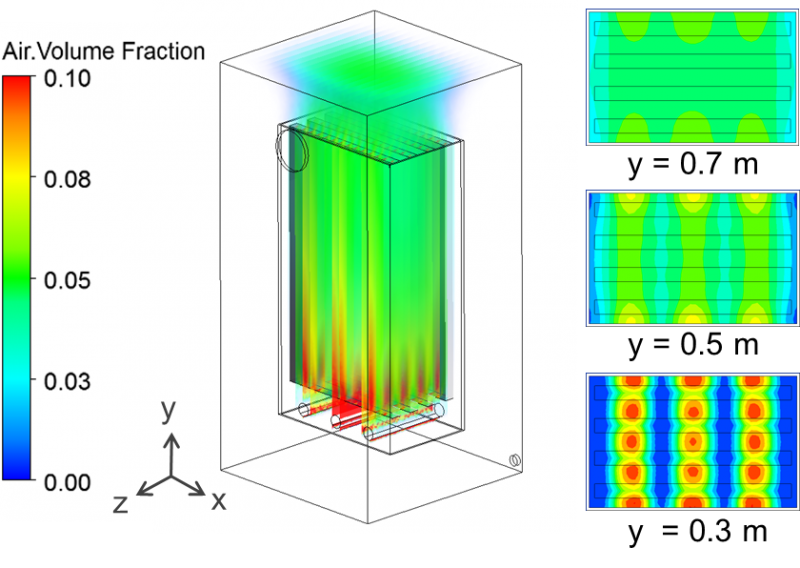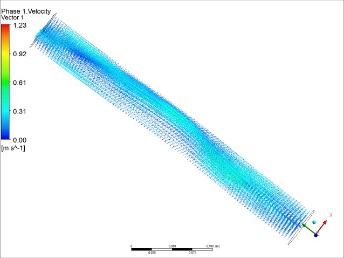Our Technology
CFD Modelling of Membrane Bioreactors
Led by Dr Xuefei Liu and Dr Yuan Wang, researchers at UNSW and CTET have developed a variety of computational methods to the analysis of complex two-phase and three-phase flow in municipal scale membrane bioreactors (MBR). Since 2006, the team has developed Computational Fluid Dynamics (CFD) models to predict the hydrodynamics and mixing in full scale reactors (macro-scale simulations), to optimise the flow and aeration patterns in the membrane filtration zone (meso-scale simulations), and to quantify the aeration induced lateral fibre movement on membrane surface shear stress and filtration flux (micro-scale simulations). The CFD models developed were based on the commercial CFD package Ansys Fluent/Ansys CFX, incorporating with self-developed code to describe the rheological behaviour of activated sludge, and porous media model to account for the flow resistance caused by the full scale hollow fibre membrane module to the three-dimensional fluid flow.
Prediction of the hydrodynamics and mixing in full scale reactors (Macro-scale Simulations)
MBRs are mostly designed around biokinetic and membrane fouling considerations, even though the mixing within an MBR system is of critical importance to the performance of the system. Mixing can affect both the efficiency of nutrient removal in the bioreactor and the settling of the sludge. Good mixing promotes the transfer of substrates and theat to the microorganisms and ensures the effective use of the entire reactor volume. Three-dimensional CFD models have been developed to model the overall mixing for a 2MLD hollow fibre MBR in Sydney and a 5MLD flat sheet MBR in South Australia.

Optimisation of membrane module design and aeration patterns (Meso-scale simulations)
Commercial MBRs are available in different configurations based on membrane orientation, aerator aperture size, aerator position and free volume between membrane modules and tank walls. The overarching design goal is to create a spatially uniform velocity gradient in the filtration zone to limit localised fouling and promote even distribution of filtrate flux over all the available membrane area. However, in the absence of performance data collected under controlled conditions, it is difficult to assess which design achieves the highest surface shear while simultaneously optimising footprint of the filtration zone and power input for the aeration system. This can be attributed to the complex conditions in the filtration zone and the interdependence of the effect of each design variable on bubble induced shear.
The objective of this project was to evaluate which combination of features of the hollow fibre membrane module, filtration tank, and aeration system that can achieve higher and more homogeneous shear in the filtration zone at the same aeration energy input. A Computational Fluid Dynamics (CFD) approach using rheological and porous media sub-models was used to simulate pressure drop across the hollow fibre membrane bundle for a range of conditions that are relevant for application of MBR’s in municipal wastewater.

Understanding aeration induced lateral fibre movement on membrane surface shear and filtration flux (Micro-scale simulation)
we developed a three-dimensional numerical model to quantify aeration induced fibre displacement and the surface shear of submerged hollow fibre membranes using a two-way Fluid Structural Interaction (FSI) approach. This model accounts for the interactions between fibre and turbulent bubbly flow and enables numerical simulation of the three-dimensional transient features of shear on the hollow fibre membrane surface. This novel FSI approach provides insight into aeration induced fibre movement enabling critical assessment of the effects of material, fibre diameter and looseness on surface shear and flux in submerged hollow fibre membrane systems.

For more information, please contact Dr. Yuan Wang at yuan.wang@unsw.edu.au

